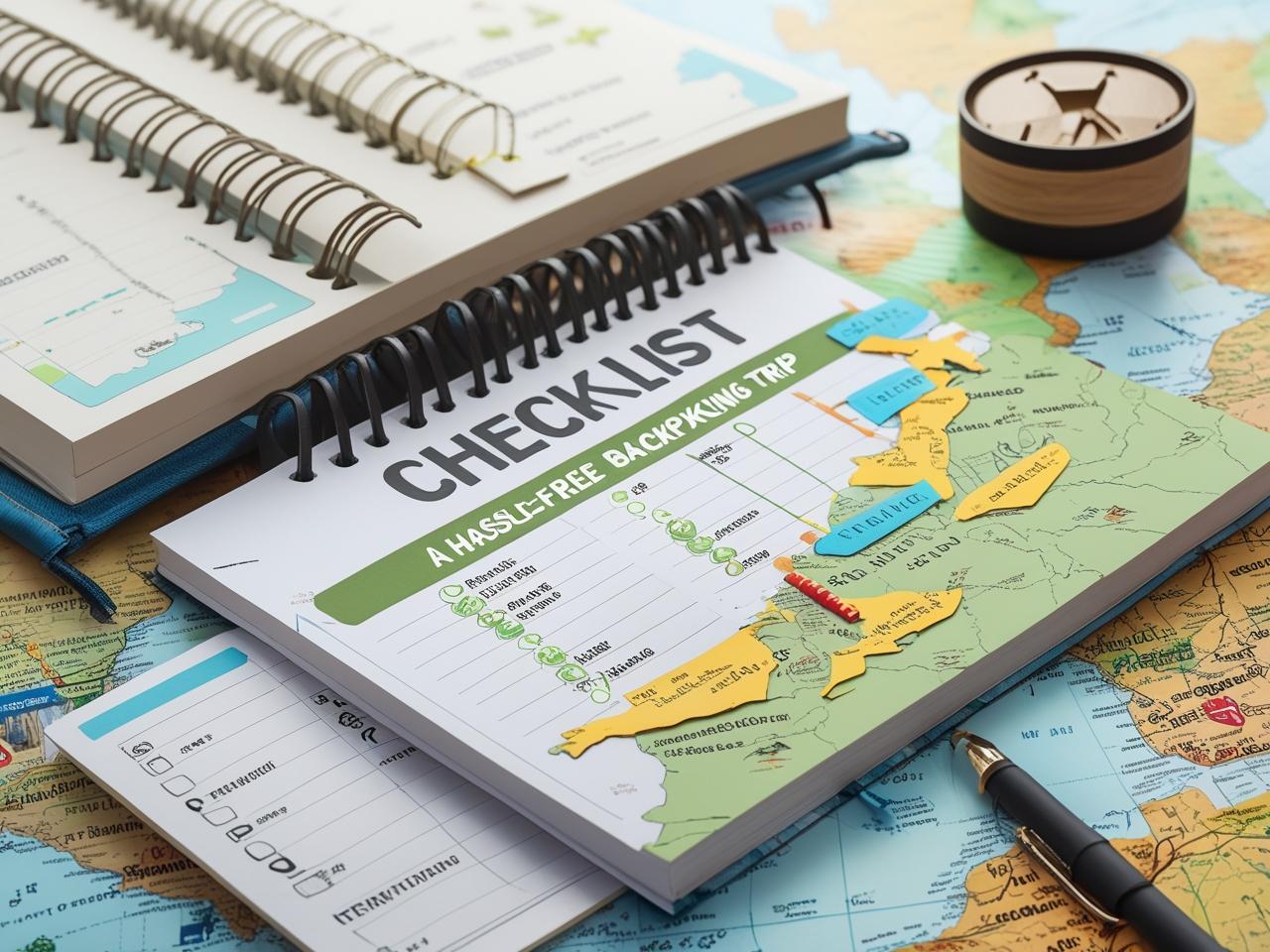Backpacking through Europe is a dream for many travelers. With dozens of countries, efficient transportation, and a mix of ancient history and modern culture, Europe is ideal for a long, exploratory adventure. But to avoid common pitfalls, you’ll need more than a Eurail pass and a map. This ultimate checklist will help you plan a stress-free journey—from gear and documents to safety and budgeting.
Why Backpack Through Europe?
Europe is uniquely suited for backpackers due to:
- Open borders within the Schengen Area
- A vast network of trains, buses, and budget airlines
- Safe and walkable cities
- Affordable accommodation options like hostels and guesthouses
- Rich diversity in a relatively compact area
Now, let’s dive into what you need for a smooth journey.
🧾 Essential Documents
Don’t even think about leaving without these items. Missing one could derail your entire trip.
- Passport (valid for at least 6 months beyond your return date)
- Visas (check entry requirements for each country)
- Travel insurance (essential for medical coverage, lost baggage, etc.)
- Student ID (for discounts, if applicable)
- Vaccination certificate (COVID-19 or others, depending on entry requirements)
- Driver’s license and/or International Driving Permit (if renting a car or scooter)
Pro tip: Keep both physical and digital copies of all important documents in a secure cloud storage (e.g., Google Drive or Dropbox).
🎒 What to Pack in Your Backpack
Pack light but smart. Your backpack should be manageable—no more than 10–12 kg. Here’s a packing checklist:
Clothing
- 3–4 lightweight T-shirts
- 1 long-sleeve shirt
- 1–2 pairs of pants (1 jeans, 1 travel pants)
- 1 pair of shorts
- 5–7 pairs of underwear and socks
- 1 swimsuit
- 1 rain jacket or poncho
- 1 warm sweater or hoodie
- 1 pair of comfortable walking shoes
- 1 pair of flip-flops (for showers or beach)
Toiletries
- Toothbrush and toothpaste
- Small shampoo & soap (travel-size)
- Razor and shaving cream
- Deodorant
- Sunscreen
- Wet wipes
- Travel towel
- Nail clipper
Electronics
- Universal power adapter
- Smartphone + charger
- Power bank
- Headphones or earbuds
- Optional: Lightweight tablet or e-reader
- Camera (if photography is a priority)
Miscellaneous
- Lock for hostel lockers
- Sleep mask and earplugs
- Compact first-aid kit
- Reusable water bottle
- Quick-dry laundry line or detergent sheets
- Notebook or travel journal
🗺️ Travel Planning Essentials
1. Rail Pass or Bus Pass
- Eurail or Interrail Pass: Great for flexible train travel across multiple countries
- FlixBus or Eurolines Pass: Budget-friendly buses across Europe
2. Travel Apps to Download
- Google Maps (offline maps available)
- Rome2Rio (transport connections)
- Booking.com / Hostelworld (for lodging)
- Skyscanner (for cheap flights)
- XE Currency (live exchange rates)
- Duolingo (language basics)
3. Budgeting Tools
- Use an app like Trail Wallet or Spendee to track expenses.
- Set a daily budget (e.g., €50–€70/day depending on region).
🛏️ Accommodation Tips
Europe is full of accommodation options for every budget.
Budget Options:
- Hostels (dorms or private rooms)
- Airbnb (affordable private stays or shared spaces)
- Couchsurfing (free stays with locals—great cultural exchange)
- Camping (in summer, many places allow budget-friendly campsites)
Tips:
- Book popular hostels in advance (especially in cities like Amsterdam or Paris)
- Check for free breakfast, laundry services, and kitchen access
- Read recent reviews for safety and cleanliness
🛡️ Safety and Scams to Watch For
Europe is generally safe for backpackers, but always stay alert. Common scams include:
- Fake petitions (especially in touristy areas like Paris)
- Overpriced taxis with “broken meters”
- Distraction thefts on trains or at ATMs
- Unofficial money changers
Safety Tips:
- Use a money belt or hidden pouch for valuables
- Always lock your backpack in hostels
- Keep emergency numbers handy
- Register with your embassy if staying long
🕒 How Long Should You Spend?
Depending on your schedule and budget, here are a few popular timeframes:
- 2 weeks: Choose 2–3 countries close together (e.g., France, Belgium, Netherlands)
- 1 month: Mix Western and Eastern Europe (e.g., Spain, Italy, Croatia, Hungary)
- 2–3 months: Full loop including lesser-known gems (e.g., Portugal, Slovenia, Romania, the Baltics)
Move every 2–4 days to avoid travel burnout and truly experience each location.
🍴 Eating on a Budget
Europe offers amazing food—and you don’t have to splurge to enjoy it.
Budget Tips:
- Eat at local bakeries or food stalls
- Shop in supermarkets and cook in hostel kitchens
- Try prix fixe menus at lunchtime (cheaper than dinner)
- Carry snacks and fruit for travel days
📅 Final Pre-Trip Checklist
✅ Passport and documents
✅ Travel insurance confirmation
✅ Hostel and transport bookings
✅ Offline maps and travel apps
✅ Emergency cash (in Euros and/or local currency)
✅ Small padlock and daypack
✅ Energy, curiosity, and an open mind
Let the Adventure Begin
Backpacking through Europe is about more than ticking cities off a list—it’s about immersing yourself in the cultures, people, and landscapes that make this continent unique. With a clear plan and a flexible attitude, you’ll avoid the usual rookie mistakes and make the most of every moment. This checklist is your launchpad—now go explore Europe, one unforgettable stop at a time.
